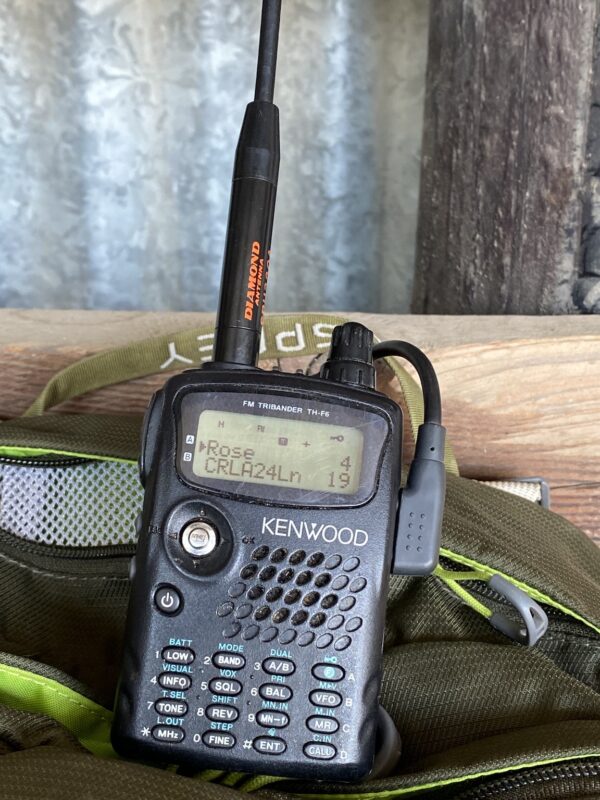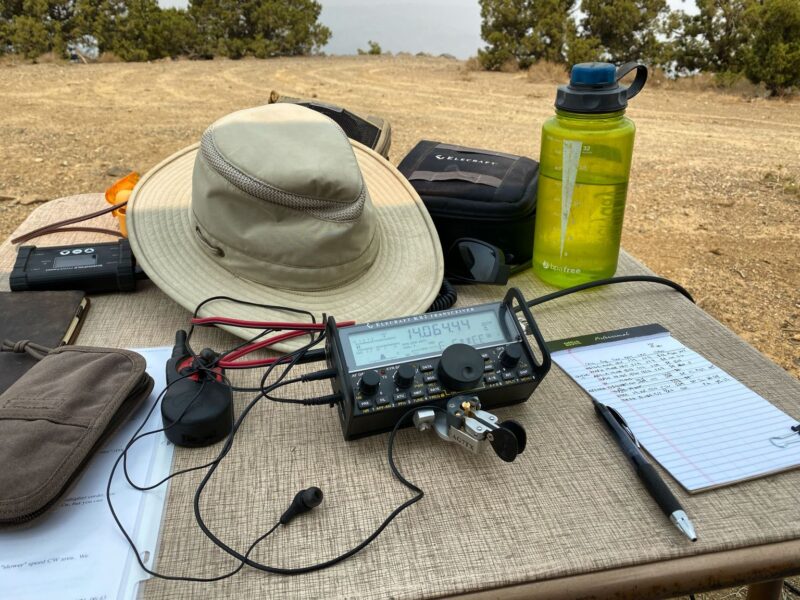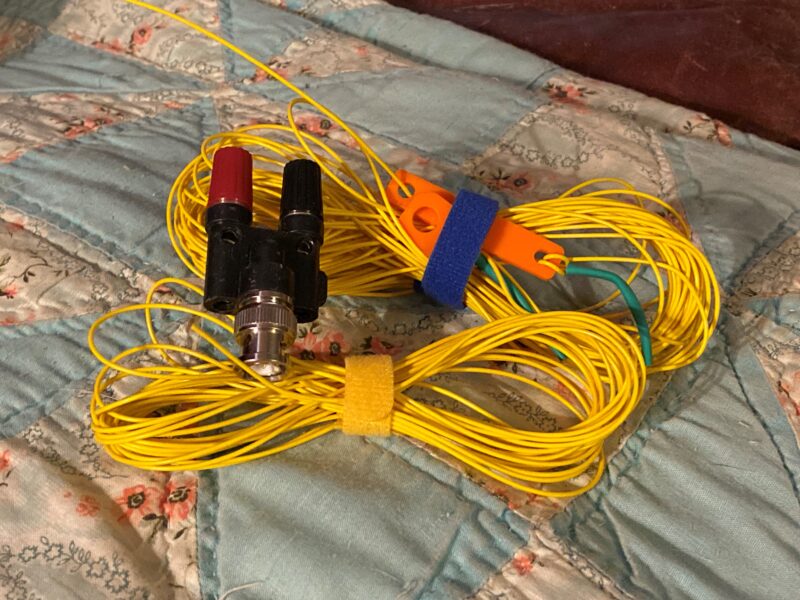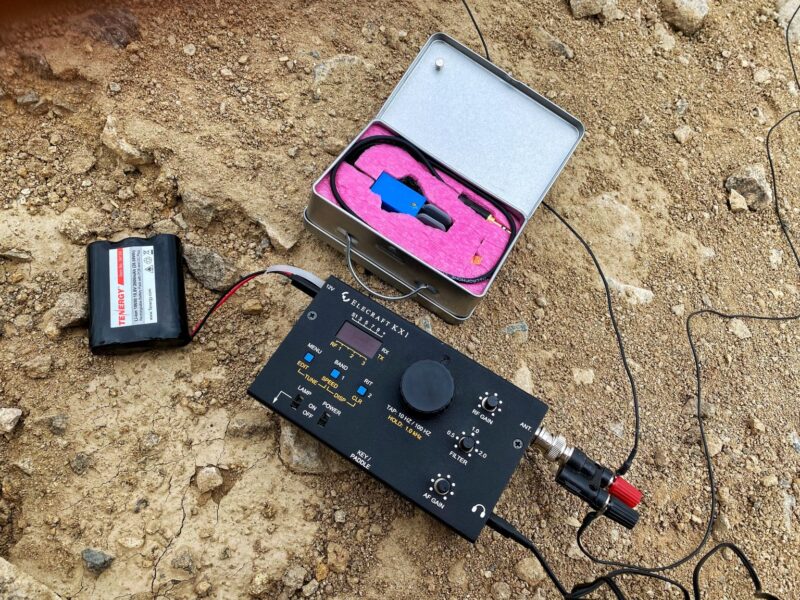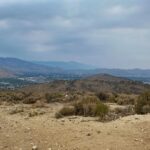
I’ve had my Elecraft KX1 for awhile now. It is a solid little radio. In fact, it is one of my favorite radios. It does so much with so little.
It is Morse Code only, but has enough filter width to handle both USB and LSB phone signals. That means I can listen to the 40m Noontime Net (7.2835MHz) with this radio and then check in to the net. Many of the net control operators copy code.
The radio makes about four watts with a good battery and will operate on the 20-, 30-, 40-, and 80-meter amateur radio bands. It will receive over the entire band and has a decent general receiver in it as well. That means I can listen to the broadcast shortwave bands if I want to.
The internal antenna tuner (ATU; which is really a matching network — it does not “tune” the antenna) is capable, quick, and quiet. It draws 50ma or so when receiving and about 700ma or so when transmitting. That means it is stingy with power and will run on the internal batteries or an external battery for hours.
I have been working on an antenna for it for a few weeks now. I was using the counterpoise wires for the Elecraft AX1 and AXE initially, but learned that the wire for the AXE was a little too close to a half-wave on the 20m band. So there is a better solution.
I built an end-fed random wire antenna, but the radio’s internal tuner was not getting a good match without an external matching transformer.
After some additional research, I decided to cut the random wire to 36-ft and built a second random wire antenna with a radiator length of 28-ft and a triple counterpoise of 16-, 12-, and 8-ft. The Elecraft documentation for the KX1 ATU suggests a radiator of 24-28-ft and a counterpoise of 1/8 wavelength on the bands of interest. So that became the second antenna for the radio.
I received a very nice 9:1 UNUN (unbalanced-unbalanced matching transformer) from Balun Designs in the mail last week. I am so glad I ordered it because their website says they are not making transformers now because of a supply hitch in the toroids (inductors) used for their builds.
I bought a Pelican 1060 case to house the radio and support equipment. The radio, antenna, BNC/banana jack adapter (plugs directly into the radio), headphones, and power cable all fit nicely. I printed and laminated a cheat sheet for the radio and velcro’d it to the inside of the top of the case. I’ll hand letter a list of QRP watering holes on 20-, 30-, 40-, and 80-m and tape it to the inside of the lid as well. All that I need to add to the kit is a battery, key, and maybe a telescoping mast.
That finished my work on the kit for Saturday. What remained to do is to test everything.
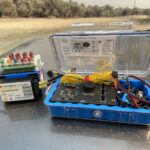
We had a nice hike while I talked to Older Son on the phone. The smoke was a little less intense than many previous mornings, so I was able to walk without an N95 mask. We met some of the usuals on the trail and greeted them as we passed. Sera enjoyed a brief dip into the (very low) Carson River for a drink and to cool off.
I’ve been parking in the maintenance yard for several weeks for some portable operations. So far I have not been challenged but expect that the ranger will wander by one morning and ask me what I’m doing. I have a story prepared should that happen. I am not sharing (yet).
I parked the rig under a tree for shade, then got out my radio kit, a mast, a battery, a key, and my antenna analyzer. I set up the first antenna and checked the impedance/SWR. The 36ft random wire is still a bit high, even with a matching transformer (9:1 UNUN). So is the 28ft radiator. Both of them will work with the KX1 internal ATU (automatic matching network), but I am not quite satisfied.
I think I will do another test, with a little better setup. I will actually collect some data (measurements) so I can do some analysis of my results. I also think I will cut another radiator 53ft long and maybe a couple more counterpoise wires as well. Then I can test different radiator lengths (28ft, 36ft, and 53ft) with some counterpoise wires of 8ft to 16ft. I can also elevate the counterpoise to see if that makes any difference.
The final test was to connect the antenna to my radio and see if I could make contacts. I connected the 36ft radiator to the matching transformer and tuned 7.29MHz. No one was on that frequency, so I engaged the ATU and it readily found a match. So I returned the radio to 7.2835MHz and checked into the 40m Noontime Net. A relay got me checked in, so the antenna was working.
I chased a few SOTA and POTA stations and finally worked KX0R on a peak in Colorado with about 4w of output power.
Then the smoke rolled in seriously. So I packed up and The Girl and I headed home for a bite of lunch, a shower (for me), and a nap (for both of us). It was a good day.
